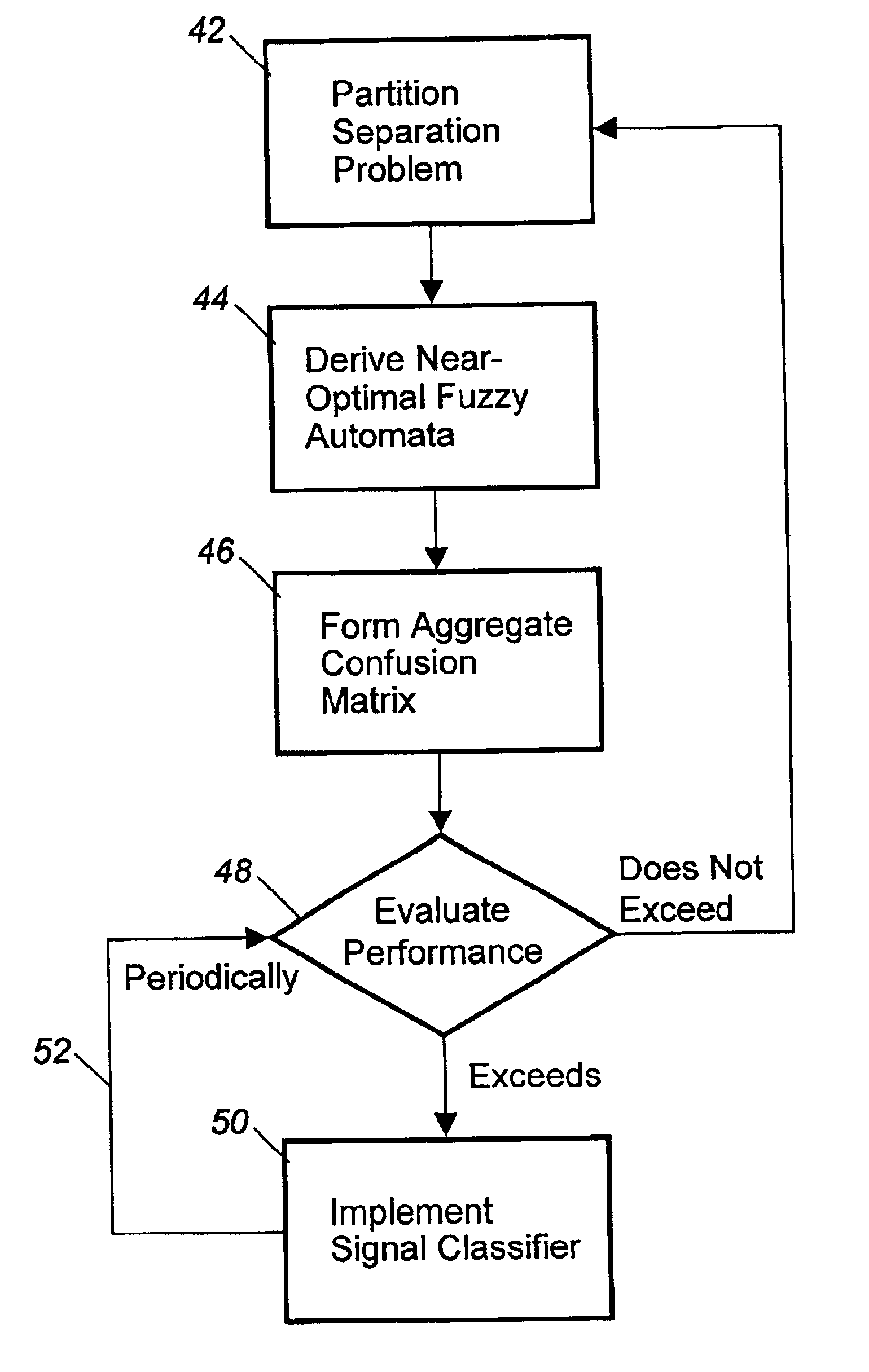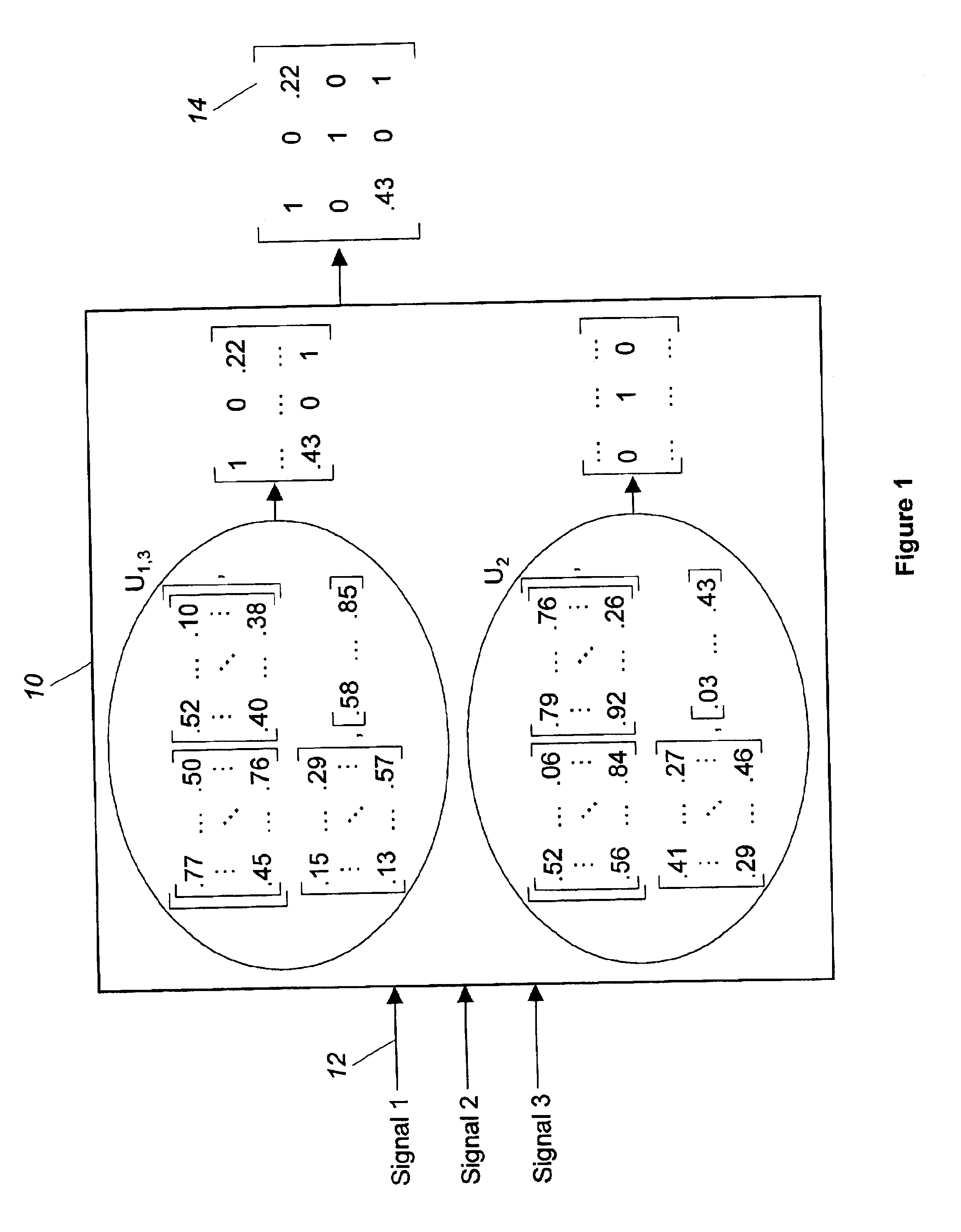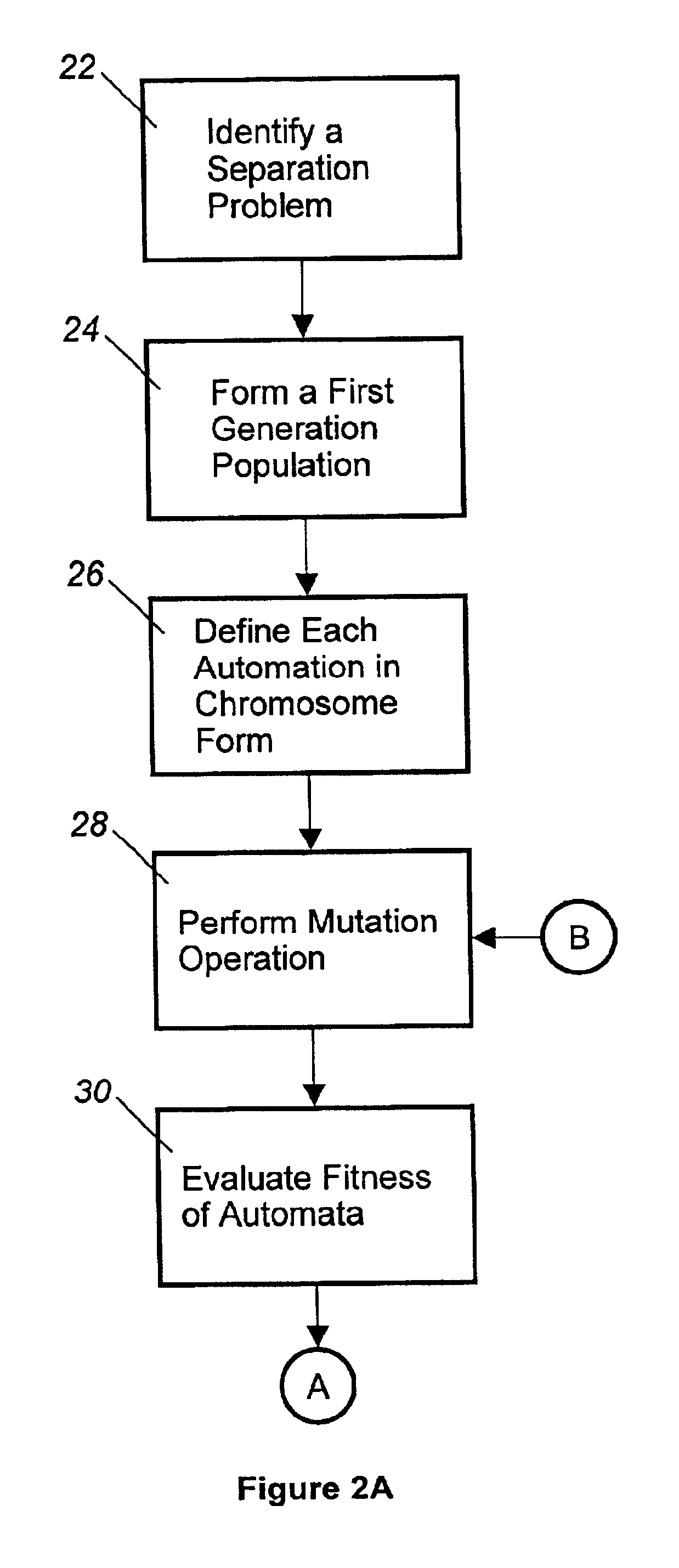Fuzzy genetic learning automata classifier
a genetic learning and automatic technology, applied in the field of signal classifiers, can solve the problems of high computational intensity, inability to adapt to a changing signal environment, and enormous flux of information, and achieve the effect of reducing and increasing the number of signal analysts
- Summary
- Abstract
- Description
- Claims
- Application Information
AI Technical Summary
Benefits of technology
Problems solved by technology
Method used
Image
Examples
Embodiment Construction
FIG. 1 illustrates an exemplary signal classifier 10 that is implemented using fuzzy genetic learning automata in accordance with the present invention. Each of the fuzzy genetic learning automata are dedicated to learning and separating a specific signal or a particular set of signals from an evolving signal environment. As will be apparent to one skilled in the art, two or more fuzzy automata may be used to implement the signal classifier 10. In a preferred embodiment, each of the fuzzy automata are implemented as individual software agents.
In operation, the signal classifier 10 receives a plurality of input signals 12 from a signal environment. The input signals 12 are evaluated by each of the fuzzy automata. For illustration purposes, a first automaton, U1,3, is intended to classify Signals 1 and 3 and distinguish them from Signal 2; whereas a second automaton, U2, is intended to classify Signal 2 and distinguish it from Signals 1 and 3. Each fuzzy automaton outputs a confusion ...
PUM
 Login to View More
Login to View More Abstract
Description
Claims
Application Information
 Login to View More
Login to View More - R&D
- Intellectual Property
- Life Sciences
- Materials
- Tech Scout
- Unparalleled Data Quality
- Higher Quality Content
- 60% Fewer Hallucinations
Browse by: Latest US Patents, China's latest patents, Technical Efficacy Thesaurus, Application Domain, Technology Topic, Popular Technical Reports.
© 2025 PatSnap. All rights reserved.Legal|Privacy policy|Modern Slavery Act Transparency Statement|Sitemap|About US| Contact US: help@patsnap.com



